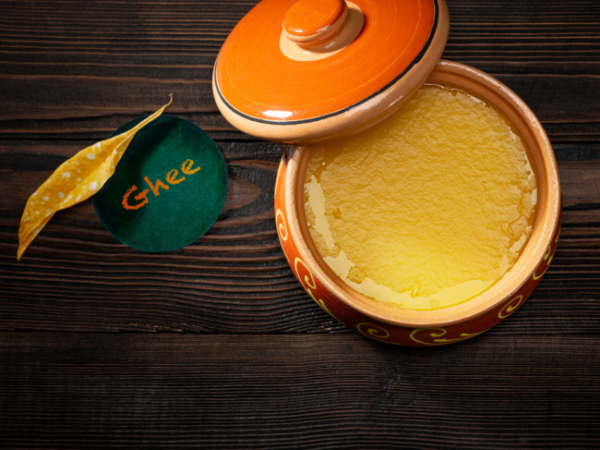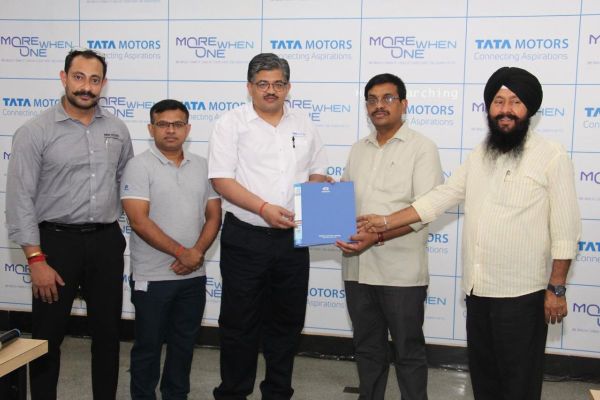In November 1886, The Times of India reported a case at the Fort Police Court, of Poonamchand Dueera charged with selling adulterated ghee. He was an odd defendant. When his advocate Mr Hurryshunker asked if good ghee ever contained animal fat, Dueera responded that ghee was an animal fat since it came from milk.
He had to repeat the question before Dueera clarified that good ghee never came from dead animals.
Hurryshunker suggested that the ghee he was selling was meant for lamps, not human consumption. Dueera said “I have never seen it used in lamps.”
When his advocate asked how long ghee stayed good, presumably hoping to establish it as perishable, Dueera said he had seen good twoyear-old ghee in Afghanistan. When asked if he knew about degrees of purity in clarified butter (ghee), Dueera’s response was almost philosophical: “I should say a thing was clarified when it is clarified.” (He lost his case and was fined ₹50.)
Tirupati’s ghee drama reminds us that all too often, very little is clarified with ghee. There is a long history of adulterating it, both with fats rendered from dead animals and with vegetable fats, which can be natural like kokum butter or manufactured like vanaspati. The fact that vanaspati, made from vegetable oils solidified through the hydrogenation process, successfully sold itself as ‘vegetable ghee’ is another source of confusion, since ghee is considered vegetarian, though, as Dueera noted, it is technically an animal fat.
It is easy to get bogged down in the social, religious and medical claims for ghee, so perhaps it’s best to focus on its physical properties. In Harold McGee’s magisterial On Food and Cooking, he explains that butter (which can be made from fresh cream or cultured yoghurt, another complication) is first heated to 90°C to evaporate water and then to 120°C “to brown the milk solids, which flavours the ghee and generates antioxidant compounds that delay to onset of rancidity”. As Dueera admitted, properly made ghee stays good for a long time.
Removing its water makes it solid, or semi-solid, and this is the factor, along with great taste and keeping qualities, that make it so useful for sweets like ladoos. Liquid oils make softer products, but ghee holds together till the moment a piece is crumbled off and then melts in your mouth. This is why it is adulterated with other fats that are also solid at room temperature: Rendered animal fats like tallow (from beef) or lard (from pork) or vegetable fats like kokum butter, stearin (from palm oil) or vanaspati.
The basic problem, however, as writers like Harish Damodaran point out, is not enough butter. The White Revolution increased milk supply, but also increased demand for milk products. It makes more economic sense for dairy companies to supply butter, or products using butter fat, like ice cream, directly to consumers, rather than a bulk shipment of ghee, at lower negotiated rates, to a customer like Tirupati. As supplies fall short, there will always be the risk of them being made up from dubious sources.
During the Raj, this often included rendered animal fats, which the British ate themselves, so were slow to see it as a problem. In 1887, ToI reported a debate in the Bombay Town Council where it was noted that the law only protected against adulteration that made ghee unhealthy, not against it being mixed with other edible fats. The law was finally changed, but this ambiguity lingered, which helped vanaspati. In 1927, a brand named Veejem advertised that it was better than ghee, because the latter was easily adulterated with animal fats.
Vanaspati ultimately fell out of favour because of problems caused by hydrogenation, but is back now with a new interesterification process and with added vegan appeal. Perhaps Tirupati could consider providing cheaper and clearly identified ‘ahimsak ladoos’ made with vanaspati, along with real ghee ladoos for those who can afford them.
He had to repeat the question before Dueera clarified that good ghee never came from dead animals.
Hurryshunker suggested that the ghee he was selling was meant for lamps, not human consumption. Dueera said “I have never seen it used in lamps.”
When his advocate asked how long ghee stayed good, presumably hoping to establish it as perishable, Dueera said he had seen good twoyear-old ghee in Afghanistan. When asked if he knew about degrees of purity in clarified butter (ghee), Dueera’s response was almost philosophical: “I should say a thing was clarified when it is clarified.” (He lost his case and was fined ₹50.)
Tirupati’s ghee drama reminds us that all too often, very little is clarified with ghee. There is a long history of adulterating it, both with fats rendered from dead animals and with vegetable fats, which can be natural like kokum butter or manufactured like vanaspati. The fact that vanaspati, made from vegetable oils solidified through the hydrogenation process, successfully sold itself as ‘vegetable ghee’ is another source of confusion, since ghee is considered vegetarian, though, as Dueera noted, it is technically an animal fat.
It is easy to get bogged down in the social, religious and medical claims for ghee, so perhaps it’s best to focus on its physical properties. In Harold McGee’s magisterial On Food and Cooking, he explains that butter (which can be made from fresh cream or cultured yoghurt, another complication) is first heated to 90°C to evaporate water and then to 120°C “to brown the milk solids, which flavours the ghee and generates antioxidant compounds that delay to onset of rancidity”. As Dueera admitted, properly made ghee stays good for a long time.
Removing its water makes it solid, or semi-solid, and this is the factor, along with great taste and keeping qualities, that make it so useful for sweets like ladoos. Liquid oils make softer products, but ghee holds together till the moment a piece is crumbled off and then melts in your mouth. This is why it is adulterated with other fats that are also solid at room temperature: Rendered animal fats like tallow (from beef) or lard (from pork) or vegetable fats like kokum butter, stearin (from palm oil) or vanaspati.
The basic problem, however, as writers like Harish Damodaran point out, is not enough butter. The White Revolution increased milk supply, but also increased demand for milk products. It makes more economic sense for dairy companies to supply butter, or products using butter fat, like ice cream, directly to consumers, rather than a bulk shipment of ghee, at lower negotiated rates, to a customer like Tirupati. As supplies fall short, there will always be the risk of them being made up from dubious sources.
During the Raj, this often included rendered animal fats, which the British ate themselves, so were slow to see it as a problem. In 1887, ToI reported a debate in the Bombay Town Council where it was noted that the law only protected against adulteration that made ghee unhealthy, not against it being mixed with other edible fats. The law was finally changed, but this ambiguity lingered, which helped vanaspati. In 1927, a brand named Veejem advertised that it was better than ghee, because the latter was easily adulterated with animal fats.
Vanaspati ultimately fell out of favour because of problems caused by hydrogenation, but is back now with a new interesterification process and with added vegan appeal. Perhaps Tirupati could consider providing cheaper and clearly identified ‘ahimsak ladoos’ made with vanaspati, along with real ghee ladoos for those who can afford them.








